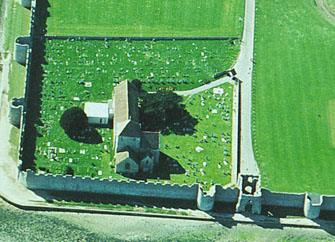 Contents -
Previous Article -
Next Article
Contents -
Previous Article -
Next Article
The Roman army camp or castra was where the legion made its home each night while on campaign or while stationed in one place serving as a garrison for many months and even years. The same basic plan, designed by Roman military engineers for efficiency, served well for both mobile army camp and permanent frontier fortification. The legionary headquarters were at the center of the castra's enclosure. Two main streets led into the camp, meeting at the headquarters tent or building. These streets were always given the same mane, no matter which Roman camp you were in. One was called VIA PRINCIPIA and the other VIA PRAETORIA. While on the move, the Roman army would march twenty to twenty-four miles in five hours every day, then stop to make camp. Each soldier knew his job and went about his duties. Some dug a ditch around the outside of the camp and piled the earth up on the camp enclosure side to make an embankment which was sometimes topped with sharpened poles to make a palisade wall. Other soldiers set up tents, dug latrines, foraged for food and wood, or performed any of the great variety of other tasks needed to make the Roman castra an organized camp that could be easily defended. Each camp could function almost as a miniature city. All over the Roman world, these camps were built very much the same. The buildings or tents would be in the same part of the camp, and even the streets had the same names in every camp. A soldier stationed in an outpost in Britain would know his way around a Roman castra built in the middle of the Syrian Desert, even if he were stumbling back to his tent in the middle of the night after having had too much wine to drink!
Go to next article:
Go back to previous article: